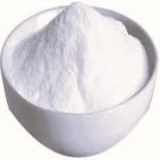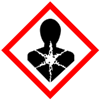 |
Lorazepam SDS Safety Data Sheet of Supplier Exporter Manufacturers' Representative |
Email: info@ammol.org |
Call Toll Free +1-855-552-6665 |
Quick Links to Products: Diclofenac Sodium | Ethylparaben | Furosemide | Levofloxacin | Lisinopril | Lorazepam | Magnesium Trisilicate | Magnesium Malate | Magnesium Taurate | Maleic Acid | Malic Acid | and more -- |
Lorazepam or o-Chloroxazepam
CAS Number: 846-49-1
Molecular Formula: C15H10Cl2N2O2
Molecular Weight: 321.16

Lorazepam or o-Chloroxazepam
Lorazepam or o-Chloroxazepam SDS, Safety Data Sheet
MSDS Sheet, Material Safety Data Sheet 29-Jul-24
1. Product Identification
Product Name & Other Names: Lorazepam or o-Chloroxazepam.
CAS Number: 846-49-1
EINECS EC Number: 260-148-9
Intended Use: Industrial Manufacturing.
Relevant uses and uses advised against (if any): Industrial Manufacturing.
Suppliers: As per letterhead.
2. Hazards Identification
GHS, Globally Harmonized System Classification in accordance with 29 CFR 1910
Classification according to Regulation (EC) No 1272/2008
Reproductive toxicity Category 2, H361
Labeling according to GHS USA & Regulation (EC) No 1272/2008
GHS Label Elements  Health Hazard |
Signal Words: Danger
Hazard Statements:
H361: Suspected of damaging fertility or the unborn child.
Precautionary Statements:
P202: Do not handle until all safety precautions have been read and understood.
P260: Do not breathe dust/fume/gas/mist/vapors/spray.
P262: Do not get in eyes, on skin, or on clothing.
P264: Wash contaminated parts thoroughly after handling.
P270: Do not eat, drink or smoke when using this product.
P280: Wear protective gloves/protective clothing/eye protection/face protection.
P302+352: IF ON SKIN: Wash with plenty of soap and water.
P305+351+338: IF IN EYES: Rinse cautiously with water for several minutes. Remove contact lenses if present and easy to do – continue rinsing.
3. Composition/Information on Ingredients
Product Name & Other Names: Lorazepam or o-Chloroxazepam.
CAS Number: 846-49-1
EINECS EC Number: 260-148-9
4. First Aid Measures
Inhalation: Remove affected person to fresh air; if normal breathing has not returned within a few minutes after exposure, get medical attention.
Skin: Remove contaminated clothing; wash affected area with soap and water; launder contaminated clothing before reuse. Seek medical attention.
Eyes: Immediately, flush eyes for 15 minutes in clear running water while holding eyelids open; seek medical attention immediately.
Ingestion: Drink two glasses of water followed by milk, milk of magnesia or other non-alcoholic liquids; Do not induce vomiting; seek medical attention immediately.
Physician may treat symptomatically.
5. Fire Fighting Measures
Flammable Limits: No unusual fire or explosion hazards noted. However, it will burn at high temperature.
General Hazards: Contact with eyes causes immediate severe irritation of the eye and eyelids.
Extinguishing Media: Carbon dioxide, water fog, dry chemical, chemical foam.
Organics solids, may be ignitable. Keep containers cool by spraying with water. Use extinguishing media appropriate for surrounding fire. Avoid solid water jet as it may scatter the fire.
Fire & Explosion Hazard: May evolve toxic fumes, oxides of carbon (COx), oxides of nitrogen (NOx) and chlorine compounds under fire conditions.
In case of fire, wear a full face positive-pressure self-contained breathing apparatus and protective suit. Self - contained respiratory equipment; cool containers to prevent pressure buildup and explosion when exposed to extreme heat.
Hazardous Combustion Products: Products of combustion include smoke, toxic fumes, oxides of carbon to include carbon monoxide, nitrogen oxides and chlorine compounds.
Specific Methods: Cool containers exposed to flames with water until well after the fire is out.
Special Information: In the event of a fire, wear full protective clothing and NIOSH-approved self-contained breathing apparatus with full face piece operated in the pressure demand or other positive pressure mode.
6. Accidental Release Measures
Personal precautions, protective equipment, and emergency procedures: It may support combustion. Do not touch damaged containers or spilled material unless wearing appropriate protective clothing. Avoid breathing dust/fumes/gas/mist/vapors/spray. Use individual protective equipment (waterproof boots, suitable protective clothing, safety glasses, etc.).
Environmental precautions: Do not let the product enter drains, soil, or water sources.
Methods and materials used for containment cleanup procedures and Storage: Contain spilled material. Cover with an inert, non-combustible absorbent material, (e.g., sand, earth, diatomaceous earth, vermiculite). Vacuum or sweep-up and remove to an approved disposal container.
7. Handling and Storage
Precautions for safe handling: Apply according to good manufacturing and industrial hygiene practices. Ensure proper ventilation. Wash thoroughly after handling. Do not drink, eat, or smoke while handling. Avoid contact with skin, eyes, and clothing. Minimize dust generation. Avoid breathing dust/fumes/gas/mist/vapors/spray. Provide appropriate exhaust ventilation at places where dust is formed. Keep container tightly closed. Avoid ingestion and inhalation. Use individual protective equipment (waterproof boots, suitable protective clothing, safety glasses, etc.).
Conditions for safe storage, including any incompatibilities: Store in cool, dry, and ventilated area away from heat sources and protected from sunlight in tightly closed original container. Keep air contact to a minimum. Do not leave the material container open. Store protected from heat, sparks and ignition sources and incompatible materials. Avoid inhalation of dust/mist/vapor. Do not store with incompatible materials like oxidizing agent. Keep this and other chemicals out of reach of children. Storage: -20C preferred. Short term shipping may be at room temperature.
8. Exposure Controls/Personal Protection
Engineering Controls: The use of local exhaust ventilation is recommended to control emissions near the source. Provide mechanical ventilation of confined spaces. Use corrosion-resistant, explosion-proof ventilation equipment.
Exposure Limits: Not established.
Ventilation System: A system of local and/or general exhaust is recommended to keep employee exposures as low as possible.
Personal Respirators (NIOSH Approved): For conditions of use where exposure to dust or mist is apparent and engineering controls are not feasible, a particulate respirator may be worn.
Skin Protection: Wear protective gloves and clean body-covering clothing.
Eye Protection: Use chemical safety goggles and/or full-face shield where dusting or splashing of solutions is possible. Maintain eye wash fountain and quick-drench facilities in work area.
Other Control Measures: Maintain good housekeeping in work area. Handle in accordance with good industrial hygiene and safety practice.
9. Physical and Chemical Properties
Appearance: White or almost white, crystalline powder.
Odor: No information found.
Odor threshold: No information found.
pH: No information found.
Relative density: No information found.
Melting/Freezing Point: 192C-194C literature.
Initial boiling point and boiling range: 533.8C literature.
Flash point: No information found.
Auto-ignition temperature: No information found.
Decomposition temperature: No information found.
Upper/lower flammability or explosive limits: No information found.
Vapor pressure: No information found.
Vapor density: No information found.
Evaporation rate: No information found.
Flammability (solid, gas): No information found.
Partition coefficient: n-octanol/water: No information found.
Solubility in Water: Very slightly soluble in water.
Viscosity: No information found.
10. Stability and Reactivity
Stability: Stable at normal temperatures and operating conditions.
Conditions to Avoid: Avoid excessively high temperatures and contact with strong oxidizing agents.
Incompatibilities: Oxidizing Agent.
Decomposition: Decomposition yields toxic fumes, oxides of carbon (COx), oxides of nitrogen (NOx) and chlorine compounds.
Polymerization: Polymerization will not occur.
11. Toxicological Information
Toxicity Data:
LD50 Oral - Rat - 4500 mg/kg
Reproduction: Suspected of damaging fertility or the unborn child.
Carcinogenicity: Not listed as a human carcinogen by OSHA, IARC, ACGIH & NTP.
12. Ecological Information
Toxicity to fish: No information found.
Results of PBT and vPvB assessment: No information found.
Persistence and degradability: No information found.
Mobility in soil: No information found.
Bioaccumulative potential: No information found.
Mobility: No information found.
13. Disposal Considerations
Dispose of it in accordance with Local, State, and Federal Regulations. Consult local, state, or Federal Environmental Protection Agency before disposing of any chemicals. Follow all the pollution control rules.
14. Transport Information
DOT USA & ADR/RID Europe: Not dangerous goods.
IATA & IMDG: Not dangerous goods.
15. Regulatory Information
No significant information is available.
Section 16 - Additional Information
Disclaimer:
**************************
Our company provides this MSDS sheet in good faith but makes no representation as to its comprehensiveness or accuracy. This SDS sheet is intended only as a guide to the appropriate precautionary handling of the material by a properly trained person using this product. The above information has been compiled from various sources and has the possibility of discrepancy and being out-dated information. Individuals receiving the information must exercise their independent judgment and do further search in determining its appropriateness for a particular purpose. In no case shall our company be liable to loss or damages by the product user.
**************************
Please visit Main Page of Lorazepam or o-Chloroxazepam Suppliers.
American Molecules, also known as ammol.org is a distributor, supplier and manufacturers' representative of all types of Pharmaceuticals, Functional Ingredients, Excipients and Specialty Chemicals in Texas USA. Our principals manufacture supply and export USP NF BP, Ph Eur, etc grades of chemicals pure and reagent grade, mineral fortifiers, FCC food grade. Tailor made particle size and customized specifications are offered. The principal's facility is having one or more of the certifications like FDA approval and GLP, cGMP, ISO9001, ISO14001, ISO/IEC 17025, ISO22000, FSSC 22000, ISO45001, FSSAI, Kosher, HALAL, COPP, WHO-GMP certified and Written Confirmation (WC) for export to Europe is available. The manufacturers suppliers and exporters observe WHO Good Manufacturing Practices and Good Laboratory Practices.





Suppliers and Manufacturers' Representative:

9910 Bent Oak Dr
Houston, TX 77040, USA
Call Toll Free: 1-855-55-AMMOL 1-855-552-6665
Email: info@ammol.org